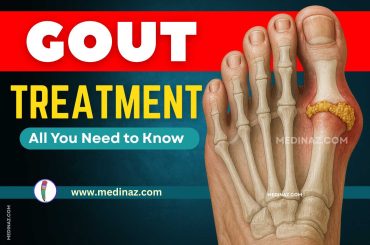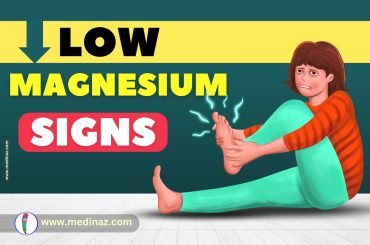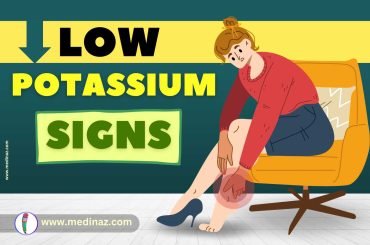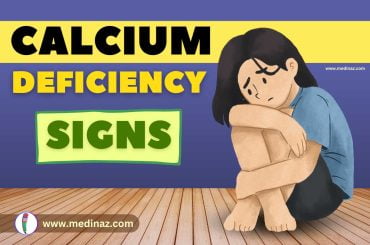In this blog, we will discuss heart attack symptoms and how to differentiate them from heartburn.
What is heart attack?
When the flow of oxygen-rich blood to the heart is significantly decreased or obstructed, it can result in a heart attack. The heart muscle, like all other tissues in our body, requires an adequate supply of oxygen to function correctly. The coronary arteries, which encircle the heart, are responsible for delivering oxygen-rich blood to the heart.
The primary reason for a heart attack is coronary artery disease. This condition is typically caused by the accumulation of fatty, cholesterol, and other substances in the arteries, resulting in blockages. These deposits are referred to as plaques, and the process of their buildup is known as atherosclerosis.
In some instances, a plaque may rupture, leading to the formation of a clot that obstructs blood flow. This blockage in the coronary artery can result in the deterioration or destruction of a section of the heart muscle.
When a portion of the heart becomes unable to function due to insufficient blood flow, it can interrupt the entire heart’s pumping cycle, resulting in reduced or halted blood flow to the body. This situation can be life-threatening if not promptly addressed.
Although less frequent, a sudden and severe contraction, known as a spasm, of a coronary artery can also lead to a cessation of blood flow to the heart muscle. This spasm can cause the artery to narrow, hindering the blood flow to the heart muscle, and may contribute to a heart attack.
Heart attack Symptoms:
- While chest pain was previously believed to be a universal symptom of heart attacks, the reality is that the symptoms can differ depending on several factors, such as gender, age, and overall health status.
- Time is very crucial in heart attack.The initial two hours following a heart attack are critical, as significant heart damage can occur during this time. Thant means the sooner you receive help for a heart attack, the better.
- As per the Society of Cardiovascular Patient Care, early symptoms of a heart attack may manifest in only 50% of individuals who experience it.
- The most frequently reported symptom of a heart attack is mild pain or discomfort in the chest that may intermittently occur, also known as “stuttering” chest pain. At times, this sensation can be likened to the feeling of an elephant sitting on your chest.
- Pain or discomfort in the upper body, such as the arms, left shoulder, back, neck, jaw, or stomach, may also be experienced.
- Your heart may beat faster or irregular
- You may have stomach discomfort which is similar to indigestion
- You may experience breathing problem, which may leave you feeling like you can’t get enough air, even when you’re resting
- You may also experience unexplained sweating
- Now it is important point to mention that your symptoms may not fit this copy book description. Trust your instincts if you think something is wrong.
Heart attack in women symptoms:
In recent decades, researchers have come to understand that heart attack symptoms can significantly vary between women and men.
Although heart attack symptoms can differ between women and men, pain and squeezing sensations in the chest remain the most prevalent symptoms reported by women.
Other symptoms include:
- unusual fatigue lasting for several days or sudden severe fatigue
- sleep disturbances
- anxiety
- lightheadedness
- shortness of breath
- indigestion or gas-like pain
- upper back, shoulder, or throat pain
- jaw pain or pain that spreads up to your jaw
Heart attack vs Heart Burn: How to differentiate?
There are some basic differences which will help you to differentiate heart attack and heart burn
Location of pain:
When experiencing a heart attack, the pain is typically concentrated in the center or left side of the chest, and it may extend to other regions, such as the arms, jaw, neck, back, or stomach.
Conversely, in heartburn, the pain is usually felt in the upper abdomen and may radiate to the chest or throat.
Nature of pain:
When experiencing a heart attack, individuals often describe the pain as a sensation of tightness, pressure, squeezing, or heaviness in the chest, along with symptoms such as shortness of breath, sweating, nausea, vomiting, or lightheadedness.
On the other hand, heartburn typically causes a burning or gnawing feeling that is aggravated by eating, lying down, or bending over.
Duration of symptoms:
During a heart attack, the pain generally lasts for more than a few minutes and may fluctuate or persist continuously, despite attempts at rest or the use of antacid medications.
In contrast, heartburn typically causes discomfort that lasts from a few minutes to several hours, and it can be alleviated by taking antacids or altering one’s position
Although some heart attacks can occur suddenly without any prior warning, many individuals may experience warning signs and symptoms hours, days, or even weeks before the actual attack. One of the most common early warning signs is recurring chest pain or pressure, also known as angina, which does not dissipate with rest. It is important to take any such symptoms seriously and consult a medical professional as soon as possible because time is of the essence and can potentially save a life.
Few commonly asked questions about heart attack:
How can I reduce my risk of having another heart attack?
Reducing the risk of having another heart attack involves making lifestyle changes and taking medications as prescribed by a healthcare provider.
Few more steps you can follow to reduce the chances of Heart attack:
- Quit smoking
- Maintain a healthy weight
- Engage in regular physical activity
- Eat heart-healthy diet that is low in saturated and trans fats
- Manage stress
- Control high blood pressure, high cholesterol, and diabetes.
In addition, it is important to attend regular follow-up appointments with a healthcare provider, take prescribed medications as directed, and adhere to any recommended cardiac rehabilitation programs.
What are the risk factors of heart attack?
There are several risk factors of heart attack. They include:
- Age: Men over 45years and women over the age of 55 years
- Tobacco use: Smoking & long-term exposure to secondhand smoking
- High blood pressure
- High cholesterol or triglycerides
- Obesity
- Diabetes
- Metabolic syndrome
- Family history of heart attacks
- Not enough exercise
- Unhealthy diet which includes plenty of sugars, animal fats, processed foods, trans fats and salt.
- Stress
- Illegal drug use
- A history of preeclampsia
- An autoimmune condition
What are 3 early signs of heart attack?
The most common early signs of a heart attack are:
1. Chest pain or Discomfort:
This is the most common symptom of a heart attack. The pain may feel like a tightness, pressure, squeezing, or fullness in the center or left side of the chest. The discomfort may last for several minutes or go away and come back.
2. Shortness of breath:
You may feel like you can’t catch your breath or are gasping for air. This can occur with or without chest discomfort.
3. Fatigue and weakness:
You may feel unusually tired or weak, even if you haven’t exerted yourself. This can occur with or without chest discomfort or shortness of breath.
What is the First sign of Heart attack?
It’s true that sudden cardiac arrest can be the first symptom of a heart attack, but it’s important to note that many people experience warning signs and symptoms in advance. In fact, chest pain or pressure, known as angina, that persists even with rest can be an early warning sign of a heart attack.
This symptom can occur hours, days, or even weeks before a heart attack strikes. It’s important to pay attention to these warning signs and seek medical attention promptly to prevent a more serious cardiac event.
Check the other informative blogs:
A Visual Learning Platform





